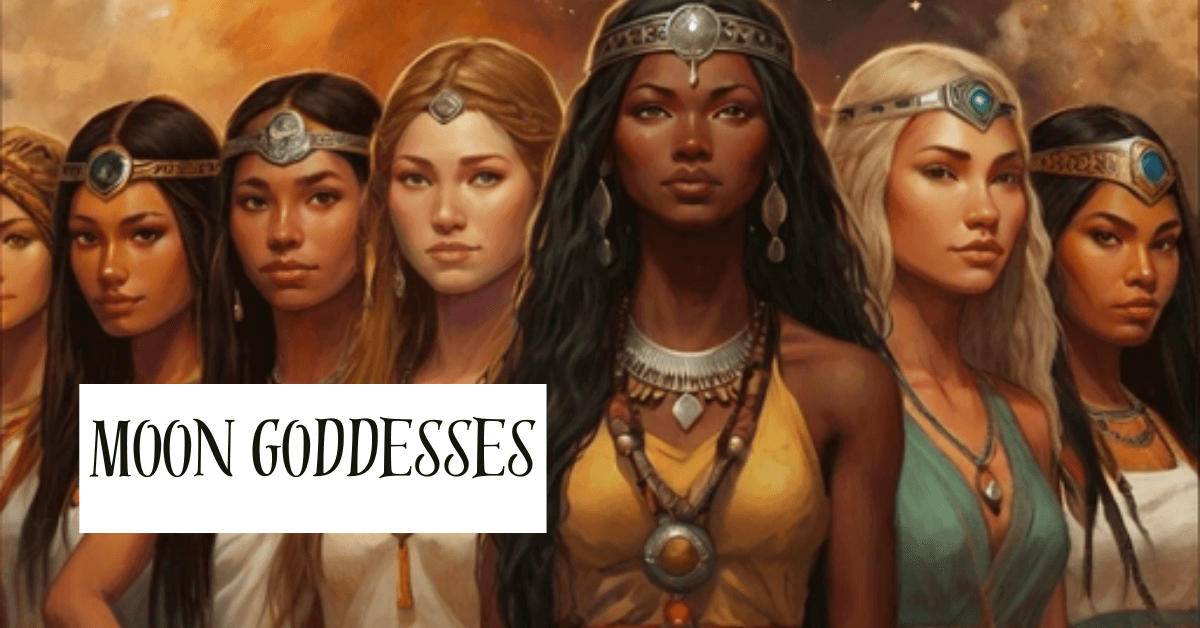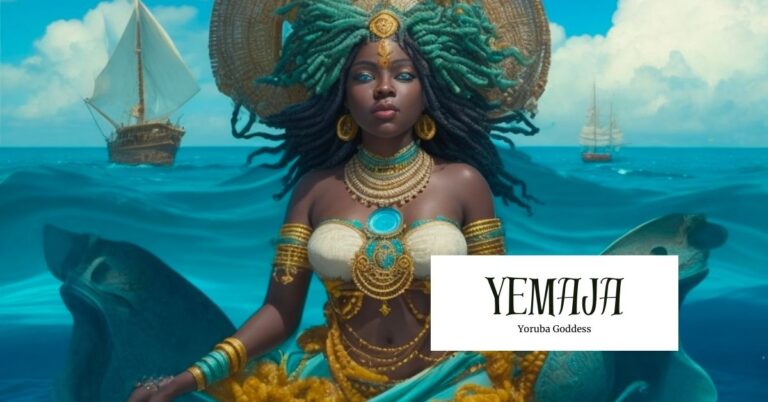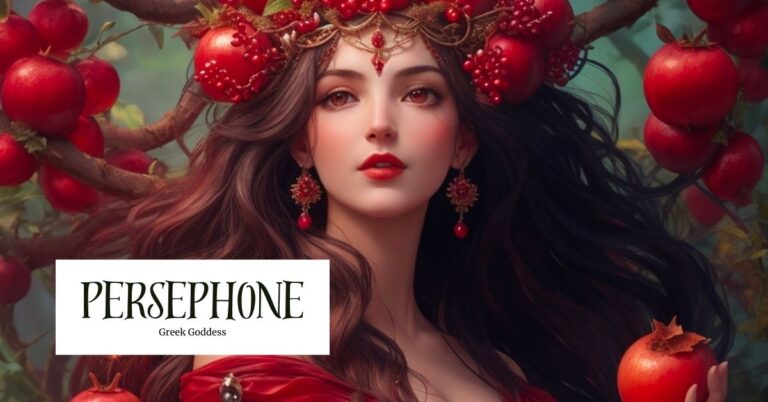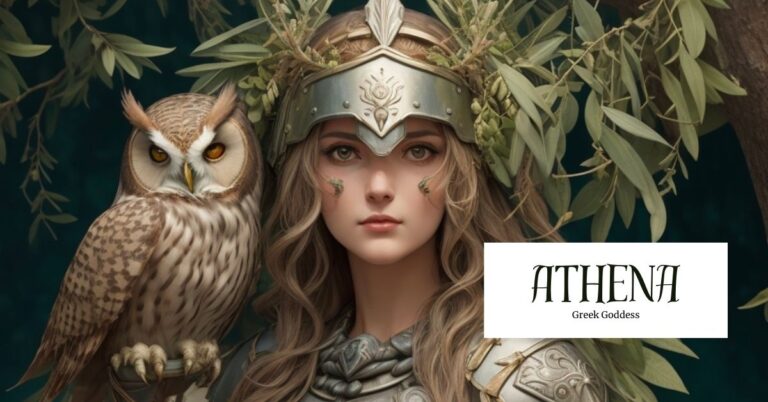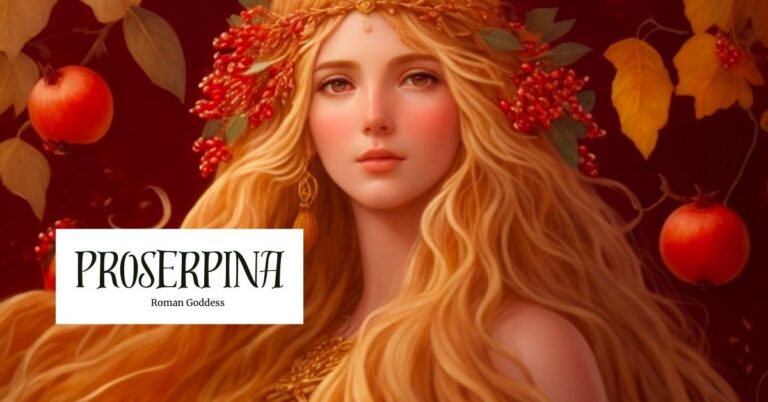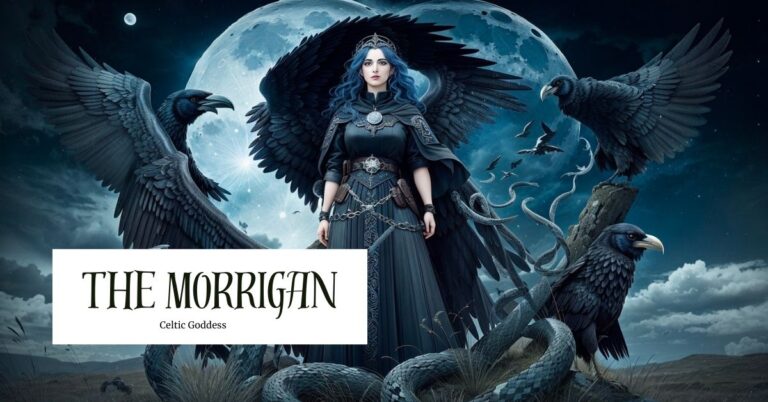10 Moon Goddesses in World Mythology
Moon goddesses are an eclectic group within world religions; with each individual goddess having varied amounts of stage time within legends, a variety of powers and abilities, and additional associations beyond the lunar disc, they are a widespread, functional group of deities with lots of intriguing details to their names. Reading and learning the origins and descriptions of these lunar goddesses provides a deeper insight not only into the religions these cultures followed but into their very societies themselves.
Who Are the Moon Goddesses?
Moon goddesses are deities in world religions that are associated with the moon; typically, however, lunar deities are masters at multitasking, and they often juggle other associations such as water, healing, time, and fertility. Their many abilities and traits vary from easily angered and protective warriors to gentle empaths with no violent bones in their bodies. These goddesses are truly capable of so much more than one might expect.
Auchimalgen

Overview
Auchimalgen is a goddess of the moon native to South America, specifically to Chile. She is beyond loved by her people. In fact, unlike every other Chilean god and goddess in the region, Auchimalgen is the only goddess who is benevolent and caring towards humans. While the other gods and goddesses mean ill will toward people, Auchimalgen protects them not only from everyday life struggles but also from her fellow deities. This creates a loyalty between her and her people.
Like many moon goddesses, she is married to the Chilean sun god.
Characteristics
- A beautiful woman with traditional South American features
- She is often depicted with elaborate headdresses and jewelry
Abilities
- Shines with the light of the moon
- Prophetic abilities
- Wards off evil
- Protects from storms and natural disasters
Symbols
- Silver
- The moon and its shapes
- Water
- White flowers
Traits
- Protective
- Inspiring
- Kind
- Benevolent
Festivals/Rituals
- People can wear and carry her symbols to win her favor, including silver clothes/jewelry
- Floral scented water calls for Auchimalgen’s blessings and good will
Chang’e

Overview
Chang’e is the Chinese moon goddess. Her origin is that she stole an immortality drug from her husband and hid from him on the moon. Taking the drug granted her immortality and, in a way, elevated her to godly status. Though her husband chased her in a fit of anger and sought retribution, the Hare blocked his path to protect Chang’e. Though other variations of the story exist, including that Chang’e took the potion to prevent someone else from stealing it and that her husband was pained by her absence.
Interestingly enough, her name was once Heng’e. However, the Chinese did not allow for the sharing of names of dead emperors, so when Emperor Liu Heng died, the moon goddess’s name was changed to Chang’e.
Characteristics
- Chang’e is known for being a beautiful woman
- The e at the end of her name means “pretty, young woman”
- Had pale skin, deep black hair, and pink lips like “cherry blossoms” (Mythopedia)
- Artistic depictions show her with decorative hair accessories
- She often wears long, traditional robes
- Occasionally, she has been depicted as an ugly toad such as seen on the face of the moon
Abilities
- Has immortality and lives forever
- Can float through the air, which is how she reaches the moon
- With the help of the Hare, Chang’e brews more of the immortality potion
Symbols
- A toad
- There is a toad-shaped shadow on the face of the full moon that both represents and embodies the lunar deity
- A hare, who is a common figure and friend in the stories
- The moon
Traits
- Strong
- Graceful
- Gentle
- Kind
- Solitary
- Nostalgic
- Sneaky
Festivals/Rituals
- The Mid-Autumn Festival is held in honor of Chang’e
- Moon cakes are made, given, and eaten
- This festival is based on a version of the goddess’s origin story in which her husband misses he while she lives on the moon and leaves offerings out for her
- The festival is still celebrated through Asian countries today as a harvest holiday to be grateful for family and friends
Isis

Overview
Isis is an Egyptian cosmic deity, meaning she represents the moon, sun, and stars. Her name means “Queen of the Throne” which reveals how important and influential of a goddess she is. She is considered a mother goddess as her son, Horus, is also an extremely important Egyptian deity. In fact, because she was a virgin goddess and Horus was immaculately conceived, she is connected to the Virgin Mary in Christianity.
Because she is associated with many things—including the moon, sun, stars; women; magic and healing—Isis has a great many influences on many subjects. She can affect the change in seasons. She also is associated with fertility; women pray to Isis to cure their infertility and bless them with children. Overall, she is known as a protector of women.
Characteristics
- Isis is a beautiful woman
- She has long, black hair
- She wears a detailed headdress symbolizing her power and status
- She wears a floor-length, red dress and lots of jewelry
- Her positioning in artistic depictions typically demonstrate her maternal or protective instincts
- For example, she might be reaching toward her son or raising her hands to protect someone
- Has taken the form of things such as a tree, a scorpion, or a cow
Abilities
- Possesses magical powers
- Can heal people
- Can transform herself/take on an illusion
- Return souls to their human bodies, thereby bringing them back from the dead
- Influence the changing of seasons
Symbols
- The Isis knot
- An amulet in the shape of a loop, typically red
- Supposed to represent protection in the afterlife
- Cows
- Scorpions
- Trees
Traits
- Protective
- Smart
- Nurturing
- Maternal
Festivals/Rituals
- Numerous temples were erected in her honor
- She also was frequently worshiped for her association with other gods, such as her husband Osiris
- Most rituals for Isis consisted of food offerings
Ix Chel

Overview
Ix Chel is, first and foremost, the Mayan goddess of the moon, but she also is the goddess of water, textiles, and medicine. As the ultimate goddess of femininity and womanhood, she also is associated with fertility, pregnancy, motherhood, and love. She is a figure that represents the contradictions of life and humankind; though she embodies maternal instincts and love, she also has a vicious temper, especially when she resembles an old woman.
Just as the moon moves through cycles, Ix Chel moves through cycles both through her appearance and her personality. She is one of many goddesses who fit the triple deity theory where one goddess has three forms that she either rotates through or that offer different sides to her story.
Ix Chel is married to the Mayan sky god Itzamńa, and the pair have thirteen godly children together.
Characteristics
- Three forms
- Young maiden who is beautiful and sometimes seductive
- This form is often shown with a rabbit at her side
- Grown woman using a loom to weave textiles and fabrics
- In many stories, Ix Chel meets her bushand in this form
- Elderly woman holding a water vessel and watering plants
- Young maiden who is beautiful and sometimes seductive
- Some depictions show her with claws like a jaguar
- Other depictions have a snake draped around her neck or on her head
- Her long skirts and dresses often have bones in cross patterns along the bottom
Abilities
- Gives life and assigns gender to unborn fetuses
- Has healing abilities
- Has some slight control over waters and storms
- Used storms as a punishment against humans
- Some stories say she can transform into a jaguar
Symbols
- The moon
- Rainbows
- Rabbits
- Snakes
- Bones
- Weaving loom
- Water vessels
- Colors red, black, white, yellow
Traits
- Easily angered/short temper
- Nurturing
- Creative
- Strong
- Persevering
Festivals/Rituals
- The Mayan month known as “Zip” was dedicated to Ix Chel
- Mayans completed pilgrimages to Ix Chel’s island Cozumel, which was once Cuzamil
- Some sought the goddess’s wisdom
- Mothers would journey with their daughters to receive Ix Chel’s blessing
- Young wives would ask Ix Chel for their children to be healthy baby boys
- On the island “Isla Mujeres,” or the island of women, is another temple specifically for the worship of the moon goddess
Kuu

Overview
Kuu, short for Kuutar, is the Finnish goddess of the moon. The name Kuu translates to moon in the Finnish language. There is a debate in whether or not Kuu is just the moon goddess or if she is the actual moon personified.
The Finnish view of the sun and moon differ from most world religions. According to the Finnish, the moon and sun come from a duck egg that cracked: the yolk became the sun and the whites became the moon. However, when they talk of Kuu and Päivätär (the sun diety) and their connection with the moon and sun, the Finnish invert the colors from the typical or traditional scheme: the sun begets silver, and the moon begets gold.
Characteristics
- She is a beautiful woman
- Artistic depictions vary
- Typically see has long, flowing hair
- She has an otherworldly, glowing aurora
- Both silver and gold details
Abilities
- Have some control over bees and other stinging insects
- Spin the gold of the moon into yarn and clothes
Symbols
- The moon
- The color gold
- Gold yarn
- Gold clothes
Traits
- Creative
- Artistic
- Kind
Festivals/Rituals
- Though the Finnish sometimes included Kuu and her sister Päivätär in spells (such as one used to try and prevent bees and wasps from stinging), the pair was not worshiped as frequently or intensely as other Finnish deities
Luna

Overview
Luna is the Roman goddess of the moon; she is in cohorts with too other Roman goddesses associated with the moon, Diana and Juno, but Luna represents the moon as a human being.
As the moon goddess, Luna is associated with many important aspects of humanity and society. The moon—and as a result, Luna herself— is extremely important to agriculture as its cycles helped guide farmers in planting and harvesting schedules. Similarly, women’s menstruation goes through cycles; for this reason, women would pray to Luna for assistance in dealing with their period symptoms and even with their fertility. Despite how long ago the Roman Empire was in power, the Romans knew there was an association between the moon and tides. Therefore, they believed Luna to have some control—however slight or strong—over the tides.
She and the Greek goddess Selene are counterparts with numerous similarities. However, while the details of their responsibilities and physical descriptions tend to mirror each other, the differences between Greek and Roman society left some differences between the goddesses in their personalities and presentations within myths and stories.
Characteristics
- She is beautiful with a glowing aura
- Many depictions show her with horns or a crescent halo
- Many artistic depictions show her riding and steering her chariot
- The two horses typically contradict each other with one having dark brown fur and the other having light-colored fur
Abilities
- Bring light and change day into night
- Could mask reality and/or cut through an illusion
- Strong intuition
- Could give visions because the night is associated with dreams
- Would sometimes offer people solutions to their questions or challenges while they dreamt
- Could affect human emotions
- Might have control over the tides
Symbols
- The moon, particularly in the shape of a crescent
- Her chariot, pulled by two horses or oxen
- White animals
- Birds
Traits
- Calm
- Wise
- Nurturing
- Gentle
Festivals/Rituals
- Offerings were made in Luna’s honor at certain public platforms called Gracecostasis starting as early as 304BC
- Temples hosted festival celebrations for both the moon and the sun
- Luna Noctiluca festival was dedicated entirely to her
- White animals and birds were the sacrifices of choice for the lunar goddess
Mama Killa

Overview
Mama Killa, also spelled Mama Quilla, is the Incan goddess of the moon, marriage, and menstruation. Directly translated, her name means “Mother Moon,” and she was important to the Incan religion and society as a whole. Her biggest association is to the passage of time and the many avenues that covers. First, the Incan calendar was based on the moon and its cycles. Also, rituals were planned and timed around the moon and its cycles, as were women’s menstrual cycles.
The goddess is known as a protector of women. Mama Killa is assoictaed with women not only with how the moon cycles relate to their periods but also with her influence over fertility.
There are two main myths relating to Mama Killa. First, the Incans believed that eclipses occurred because she was chased by an animal, such as a mountain lion or snake. Incans were so worried about their Mother Moon that they would try and defend her by throwing items into the sky to hopefully drive away her pursuer.
The other myth tells how dark spots appeared on the moon. In this myth, a fox falls in love with Mama Killa
Characteristics
- She is described as a beautiful woman
- She has long, black hair
- She has tan skin
- Her face is sometimes painted
- In most depictions, she is wearing a half-moon shaped gold headdress
- She is usually depicted alongside the moon in its various phases
Abilities
- Measures time
- Could regulate and change women’s menstrual cycles
- Could affect fertility in women
- Has prophetic abilities and could warn the Inca people through the moon
- Cries silver tears
Symbols
- The moon
- Silver, which represents her bright personality
- Rabbit, which is a symbol for fertility
- Colors silver and white
Traits
- Nurturing
- Wise
- Intuitive
- Flexible
- Inspiring
Festivals/Rituals
- Mama Killa had a designated temple in Cusco in modern day Peru
- Priestesses called sacerdotisas would conduct the rituals, offerings, and overall worship of the goddess
Rhiannon
Overview
Rhiannon is primarily the Welsh goddess of mythology, but she is also associated with the moon, fertility, and horses, as well as health and medicine. Because of her link to the moon, Rhiannon is also associated with sleeping and dreams, to the point that she can control someone’s sleeping patterns and communicate with dreams.
Her story is a heartbreaking one. She and her husband had a lovely baby boy. Though some versions of this story say the baby disappeared—and ultimately have a happy ending where he is found and returned—most say their child is murdered. For reasons not always explained, Rhiannon is falsely accused of her baby boy’s murder. Her punishment is to act like a horse and forever wear a donkey collar to reveal her shame.
Characteristics
- Artistic depictions typically show Rhiannon as a beautiful blonde woman with long, curly hair
- There are sometimes flowers or gold circlets atop her head
- She could be wearing elegant gowns and maybe even long, flowing capes
- She is often depicted riding the white horse
Abilities
- Rhiannon numerous magical abilities
- Can communicate with animals, especially horses and birds
- Can make someone sleep and call upon spirits through her connection with birds
- Power of healing, both physical and emotional
- Can communicate via dreams
- Can influence time
- Can turn into a horse
Symbols
- Horses
- Particularly the white horse
- Are symbols of healing, strength, power, and freedom
- Birds and their songs
- Relating to her strong communication skills
- Gems
- Crescent moon
- Donkey collars
Traits
- Strong
- Graceful
- Powerful
- Intelligent
Festivals/Rituals
- Rituals are used by individuals to strengthen their dreams and seek answers and wisdom from the goddess through those dreams
- Other rituals are used to draw upon the transformative powers of Rhiannon
- People would create altars in her honor that were decorated with flowers and fruit
Selene
Overview
Selene (also called Mene) is one of three Greek moon goddesses, but while Artemis and Hecate are both associated with the moon, Selene is believed to be the moon in human form (similarly to the Roman Luna). The moon itself was very important to the Greeks, and as she is the moon personified, she too is an important influence. She is one of the Titan goddesses, who ruled before the Olympic gods and goddesses that are more well-known.
She is associated with growth, menstruation, and some sicknesses. As is common among moon goddesses, Selene is related to childbirth as well. In fact, there was an ancient idea that easier and smoother births occurred during full moons. Witchcraft had some early associations with the moon too, which is another link between Selene and the goddess Hecate.
Selene has different great loves in different stories; one of the most common was a mortal human turned sleeping, comatose immortal Endymion. The moon goddess and Endymion had many children together. She also cared for and raised many animals, including the mythical creature the Nemean Lion.
Her Roman counterpart is Luna.
Characteristics
- Selene has taken the form of the moon itself many times
- She is described as beautiful, bright, radiant, etc
- Has fair skin and is known for having beautiful hair
- In some depictions, she has horns and/or a gold crown
- Artistic depictions might show her steering her chariot
- The chariot is pulled by two white animals, perhaps horses, oxen, or bulls
- The chariot cart is silver and white
Abilities
- Crosses the sky in her chariot, moving as the moon does
- The moon cycles were very importance in Ancient Greece
- Can give help in romantic affairs and even possesses love magic
- Can make someone sleep
- Has control over time
Symbols
- The moon, typically as a crescent or a lunar disc, and stars
- Her chariot
- Horses, oxen, bulls, mules, rams
- Torches
- Horns
Traits
- Powerful
- Brave
- Passionate
- Nurturing
- Kind
- Easily angered
Festivals/Rituals
- Offerings were made in her honor
- The moon and its cycles were used to schedule and plan different festivals, rituals, and celebrations, which put Selene into a position of power
- Cakes were made in the shape of the moon for her
- Many artistic and literary references honor her
Yemaja

Overview
Yemaja is a deity from the Yoruban faith, which calls their gods and goddesses orisha. Though her primary role is that of the sea, she is also called “The Mother of All” and is the patron of the moon. Different regions believe in slight differences of the Yoruban religion and the accompanying orisha; for instance, in Haitian Vodou practices, Yemaja is primarily a moon deity.
Yemaja is the mother goddess of Yoruban orishas, which not only gives her immense power among the deities but also links her with mothers and their children. She is associated the the Gelede society, or the society of mothers, and women pray to her for safe and peaceful pregnancies, for smooth births, for protection over their children, and more. Even those who struggle with infertility call for Yemaja’s help, and she has the power to cure infertility issues.
It is important to note that Yemaja has numerous spellings, including Yemoja, Yemanja, Imanje, Yemaya, and more.
Characteristics
- Beautiful woman of African descent typically wearing a blue dress
- The dress usually has seven layers
- Seashells and pieces of coral decorate the dress
- Has been depicted as a mermaid
Abilities
- Can cure fertility issues and bless a couple with a child
- Can control the waters and tides
- Can also bring storms and natural disasters
- Can heal physical and emotional wounds
Symbols
- The crescent moon
- The color blue
- Seashells
- The number seven because of the seven seas
- Fish
Traits
- Powerful
- Nurturing
- Protective
- Temperamental
- Fierce
- Creative
Festivals/Rituals
- Followers of Yemaja will build altars in her honor
- On the altars, people can place fish, shells, ocean water, artistic depictions including paintings, carvings, and statues, food, and more
- People, particularly mothers and sailors, pray to her for guidance and protection
What Is a Moon Goddess?
A moon goddess is a deity that is not only represents the moon but holds influence over other aspects related to the moon, such as time, fertility/menstruation, and agriculture. Though you might be tempted to overlook the strengths and abilities of lunar goddesses in favor of flashier deities, you cannot deny how civilized society would crumble without the guidance of the moon goddesses.
Who is the most powerful moon Goddess?
The most powerful moon goddess would be Rhiannon, for one top of bringing light with the moon, she has the ability to heal physical and mental wounds, influence the passage of time, control tides, and communicate with various animal species. She truly is a jack of all trades. However, Isis is also known for her strength as she is one of the most powerful Egyptian detiies for her influence over the cosmos, her protection over her people, and her effect on fate.
Final Thoughts
Moon goddesses in world religions represent femininity in all its forms, both aggressive and passive, obvious and subtle. Their influence over things such as time and fertility alter the way society functions and grows in a way that makes their importance to their various regions undeniable.
Resources
https://en.wikipedia.org/wiki/Selene
https://www.worldhistory.org/Selene/

